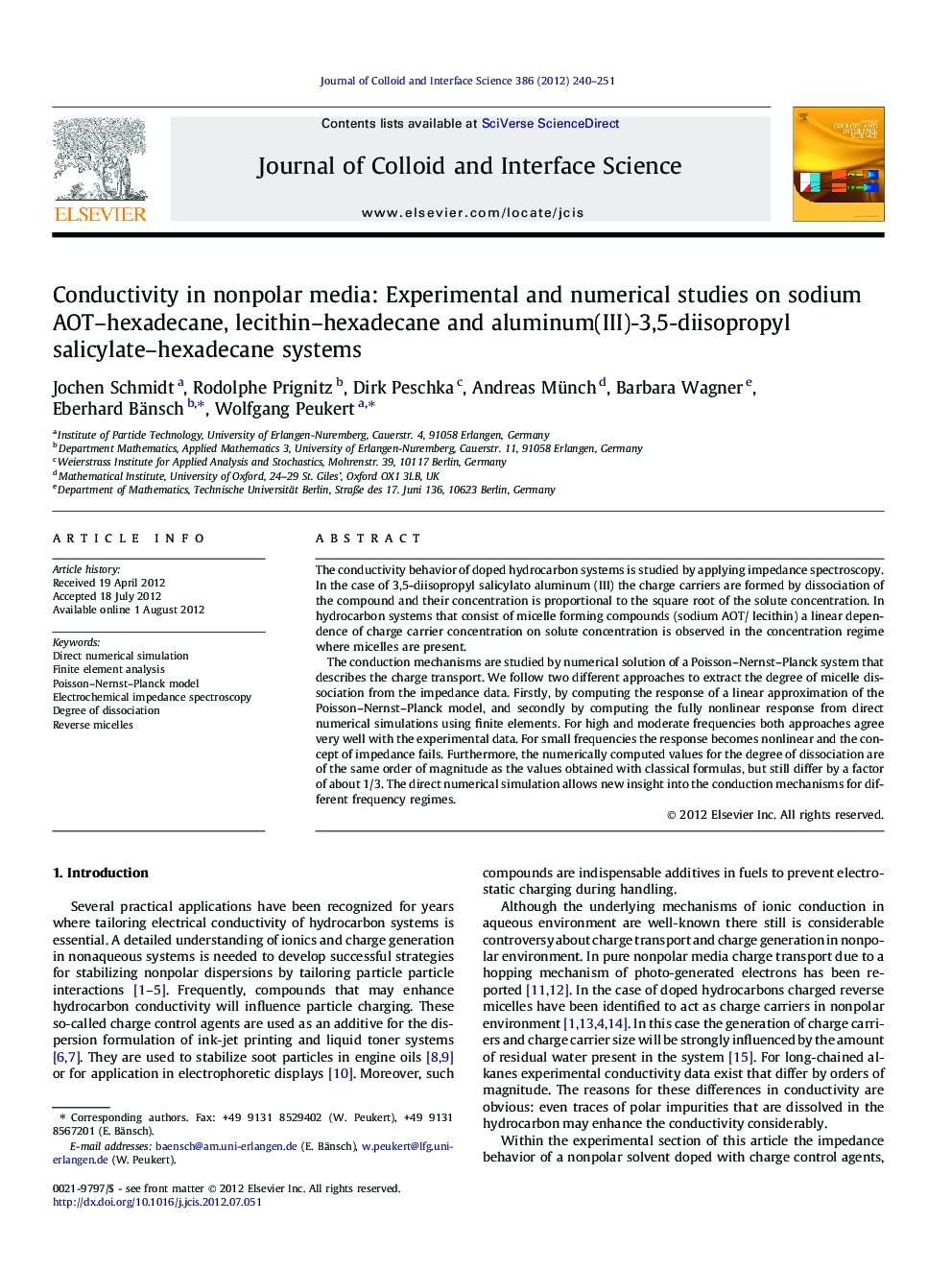| Article ID | Journal | Published Year | Pages | File Type |
|---|---|---|---|---|
| 608114 | Journal of Colloid and Interface Science | 2012 | 12 Pages |
The conductivity behavior of doped hydrocarbon systems is studied by applying impedance spectroscopy. In the case of 3,5-diisopropyl salicylato aluminum (III) the charge carriers are formed by dissociation of the compound and their concentration is proportional to the square root of the solute concentration. In hydrocarbon systems that consist of micelle forming compounds (sodium AOT/ lecithin) a linear dependence of charge carrier concentration on solute concentration is observed in the concentration regime where micelles are present.The conduction mechanisms are studied by numerical solution of a Poisson–Nernst–Planck system that describes the charge transport. We follow two different approaches to extract the degree of micelle dissociation from the impedance data. Firstly, by computing the response of a linear approximation of the Poisson–Nernst–Planck model, and secondly by computing the fully nonlinear response from direct numerical simulations using finite elements. For high and moderate frequencies both approaches agree very well with the experimental data. For small frequencies the response becomes nonlinear and the concept of impedance fails. Furthermore, the numerically computed values for the degree of dissociation are of the same order of magnitude as the values obtained with classical formulas, but still differ by a factor of about 1/3. The direct numerical simulation allows new insight into the conduction mechanisms for different frequency regimes.
Graphical abstractFigure optionsDownload full-size imageDownload high-quality image (265 K)Download as PowerPoint slideHighlights► Impedance behavior in non-polar systems is studied experimentally and simulated. ► Different charge carrier generation mechanism are discussed. ► Direct numerical simulations and a linearized model of PNP equations were presented. ► Experiments and simulations show a good agreement.
